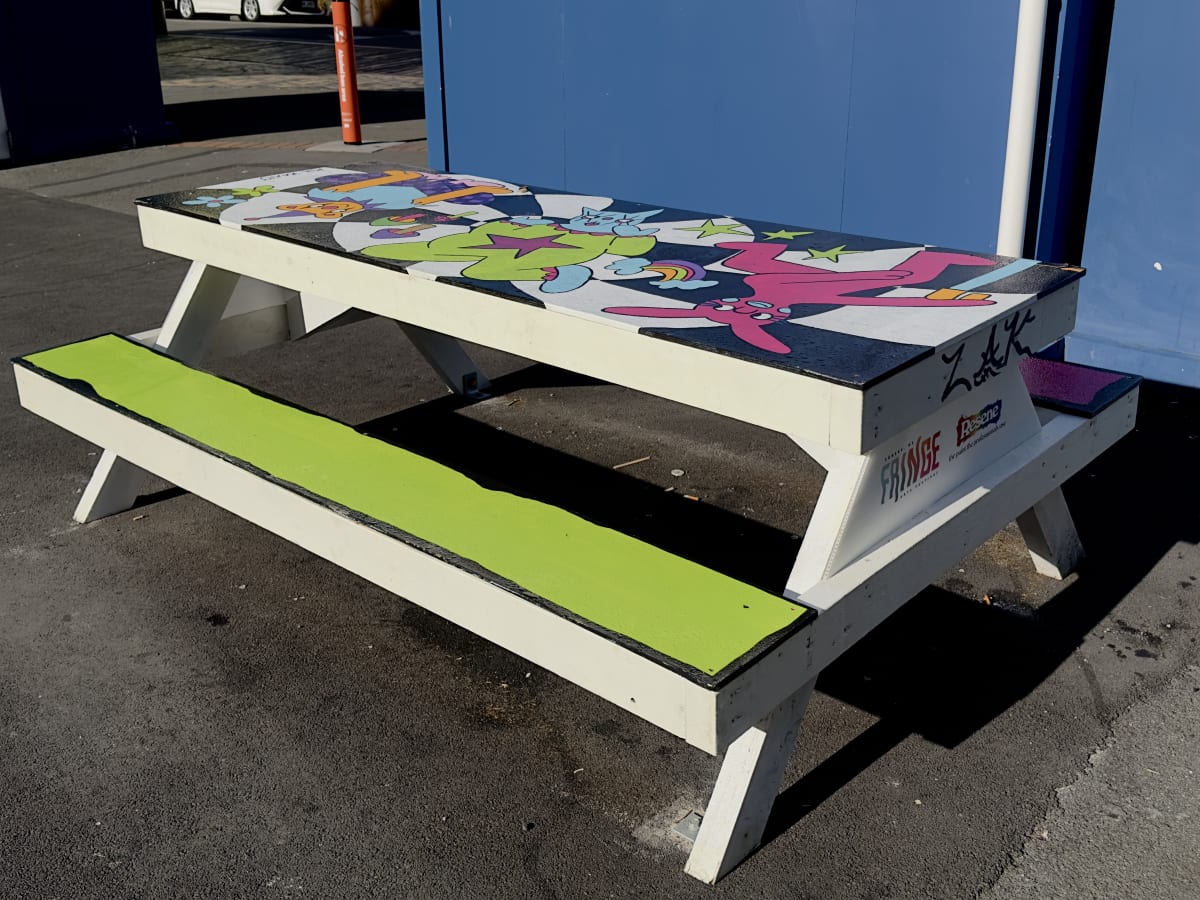
'Hostile architecture' design tactics appear in banal, everyday elements and mainly go unnoticed by those they do not target. But their intent is to frustrate and restrict certain citizens.
Opinion: Something’s going awry in the design of civic spaces in Te Whanganui-a-Tara Wellington.
The recent Swan Lane and Garrett Street upgrade in the Cuba St precinct has been celebrated for improving “attractiveness” and adding “great benefit” to local businesses, residents, and visitors. But a closer look at public seating in the area raises questions about whether the upgrade is yet another example of hostile design.
In theory, the upgrade has increased the number of places to sit with the addition of new benches. However, the benches’ steel armrests and rigid backrests immediately make them less inviting and restrict how they can be used. Putting armrests on public seating is a common tactic to restrict the homeless, or unhoused citizens, from lying down in a public space.
READ MORE:
* Poor building design and ‘heat pandemic’ a lethal combination
* Flatpack homes: a sustainable future for emergency housing
* Why we’re getting urban densification so wrong
The seating design at Wellington’s upgraded bus exchange offers a further example of this type of exclusionary design. Benches at the bus exchange have been placed outside with no overhead shelter. They're open to the rain and wind, deterring rough sleepers from inhabiting the area.
Exclusionary design, or ‘hostile architecture’, is the name given to the range of measures used in the design of shared spaces to wield control over public environments. Often subtle, these design tactics appear in banal, everyday elements and mainly go unnoticed by those they do not target. But their intent is to frustrate and restrict certain citizens, limiting both their activities and visibility.
Hostile design in action
As part of a broader study with the unhoused community of Wellington’s Te Aro, we compared seating use in the upgraded Swan Lane and Garrett Street area with the use of six picnic tables placed throughout Te Aro during the 2023 Fringe Festival. The picnic tables were installed by the Creative Capital Arts Trust with Wellington City Council support.
Our analysis, based on observing the seating’s use during weekdays and over the CubaDupa Festival, found it wasn’t just the unhoused that ‘hostile’ design measures repelled. The upgraded Swan Lane-Garrett St benches demonstrated how the design regulated their use to just one or two averaged-sized adults sitting on the benches at a time.

In contrast, the six Fringe Festival picnic tables attracted much wider use. This included the unhoused community using them for a chess tournament, people eating their lunch with friends and strangers, and large and small groups of all ages sitting together.
The tables, distinctively painted by local artists, were also able to be freely moved about – for example, to get more sun or shelter from the rain. However, we note the picnic table placed in Te Aro Park has since been fixed to the asphalt.

Our analysis illustrates how the provision of public seating is an opportunity to support collective life and embrace all members of society. It also shows how hostile seating design appears to reject the most vulnerable in our community – the unhoused.
For rough sleepers, the city and its public space is where life is wholly carried out. Public space is home and its furniture a form of respite. But this respite isn’t provided when street furniture is ‘weaponised’ to alienate them from public view.
Public seating for all?
Wellington City Council states public space should bring people together, providing venues for public events and recreation. It also talks about the importance of “visitors' perception” and the “attractiveness” of public space for businesses and residents.
Though such values appear benign, we question whether the broader role public space plays in promoting social justice and equity is increasingly overlooked.
Through explicit and implicit means, the look, feel and function of public spaces and furnishings can dictate which uses are possible, affirm norms about how these spaces should be moved through and used, and ultimately who is welcome and who is not.
Public seating should be welcoming, allowing anyone to occupy shared space with dignity. Whether a place to wait, eat, meet friends, have spontaneous conversations with strangers, or simply be within the public realm, street furniture provides a kind of refuge. Its absence, or perhaps worse, furniture designed in ways to prevent prolonged rest or to restrict use, creates exclusion.
With the promise of Let’s Get Wellington Moving and its aims to “bring more life into the CBD”, providing public furniture that everyone can use is more important than ever. It’s time we shake off the view that the housed deserve more ownership of urban space than the unhoused and admit public spaces belong to all of us.
Public furniture has the power to promote equity and manaakitanga (hospitality) in our city.







